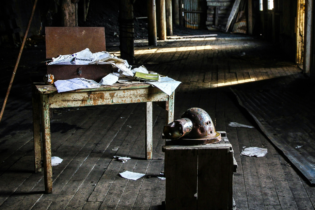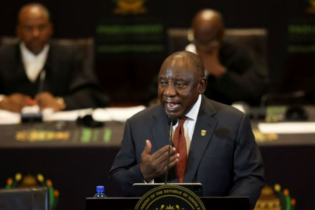Photo: Manglin Pillay, chief executive officer of SAICE
The SAICE regularly receives requests from civil engineering professionals for assistance in finding jobs – this in a country where civil engineering is high on government’s priority scarce skills list. According to Manglin Pillay, chief executive officer of the South African Institution of Civil Engineering (SAICE), the number of civil engineering professionals frequenting the country’s golf courses is an an excellent barometer of what is happening in the industry – the more there are, the better the state of the industry. However, the golf courses are starting to appear abandonedand forlorn with the scarcity of visitors. Principal engineers from well-established engineering firms in South Africa are hardly on the golf course these days; they are too busy scouringthe local and international marketplaces in search of work. “This is not a good sign – not for improving handicap and most certainly not for the infrastructure engineering economy,” says Pillay. Many senior engineers and heads of departments appear to share the same sentiment. Some companies with excellent management and administrative skills had the foresight or opportunity to plan for lean times and are able to sustain their people despite the lack of work. How long they will be able to maintain this situation is uncertain. Small- and medium-sized businesses, however, have insufficient economic depth to apply the same liberalities that their larger and more established counterparts are able to. With the lack of sustainable project work, firms are forced to release engineers back into the market. Some are exploring international pastures and others are reluctantly looking into alternative work options. The heads of civil engineering departments from four of the leading universities of technology in the country all chorus that their students are unable to secure sustainable work for in-service training, as well as post-graduation employment.South African engineers are experiencing unemployment. Despite living in South Africa where ‘job creation’ and ‘unemployment’ appear in everyday conversation, it is uncommon to hear the words ‘engineer’ and ‘unemployment’ in the same sentence. In fact, it leaves a frustrating void akin to worry.
According to Pillay: “The South African government has the audacity to bring engineers and other professionals from Cuba en masse, with full and comprehensive packages, to work in South Africa on South African government-funded projects.” He continues: “What confuses me is why we have unemployed engineers when it is very evident that there is a genuine need for engineering capacity to pursue the national demands of social and economic development. And why is there inadequate project roll-out from the biggest civil engineering client, government, when the development goals have been announced from the highest points of administration in the country, to the tune of some R800 billion over the next three years? “It appears the weakness is a lack of knowledge on how to identify projects and how to spend the allocated money. This is evident in the lack of structures, processes and systems in government to manage infrastructure spend. Then there is the cauldron of unsuitably qualified individuals, ineffectually occupying technical engineering posts, nervously managing engineering projects and second-guessing the allocation of funds.” Pillay says that despite the incapacities and inabilities, South Africa’s world-class stadiums for the 2010 FIFA Soccer World Cup confirmed that South Africans can dream with deadlines. “When first-world sceptics and cynics said we would fall flat, we raised magnificent stadiums. Not only did we rise to the occasion and deliver on demand, but much to our encouragement we proved to ourselves, and to the rest of the world, that the people of this nation and South African civil engineering are not to be trifled with.” If this was possible for a sporting event, why can’t South Africa do the same for reaching South Africa’s development goals (and the Millennium Development Goals), including healthcare, education, water and sanitation, housing and electricity for alleviating poverty, that were promised during a number of election campaigns? The lack of service delivery is now resulting in violent demonstrations, which terrify South Africans and foreign investors alike. The solution to overcome the current infrastructure development challenges is for national government to apply the same approach adopted for the World Cup. The current challenges are certainly not due to insufficient funding or deficient engineering resources. It isa matter of political will and the re-capacitating of the technical echelons within all three government structures.







